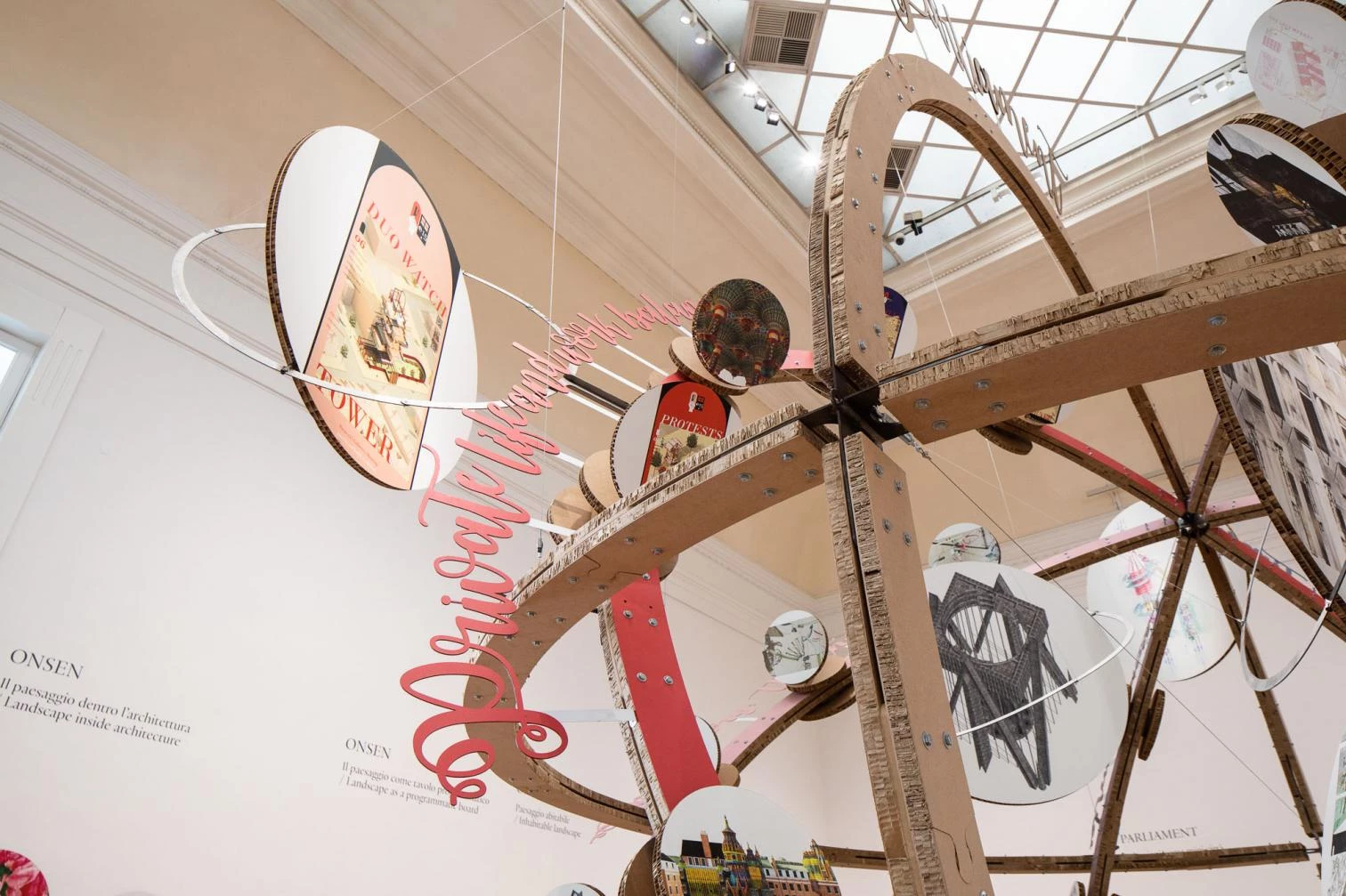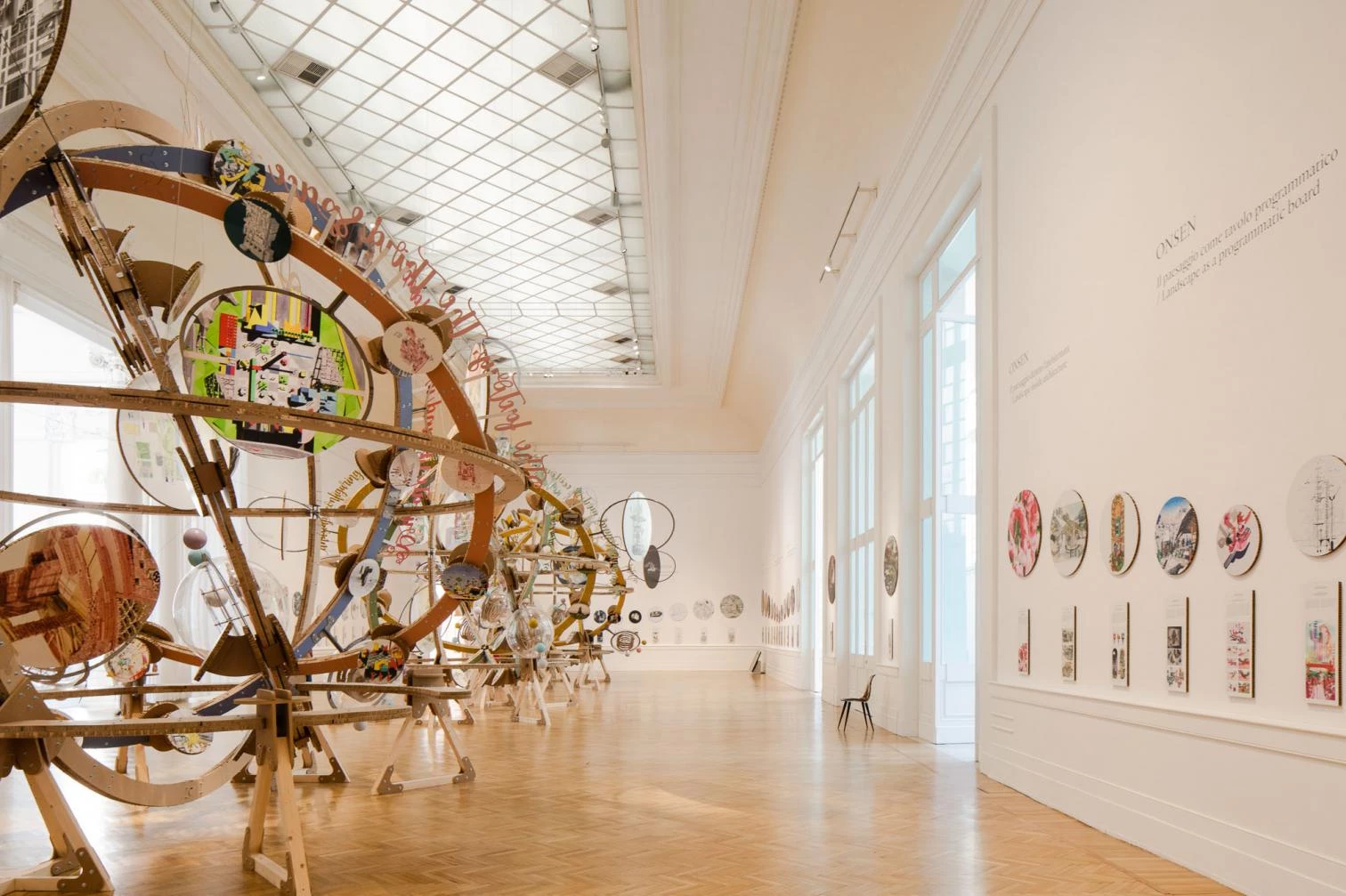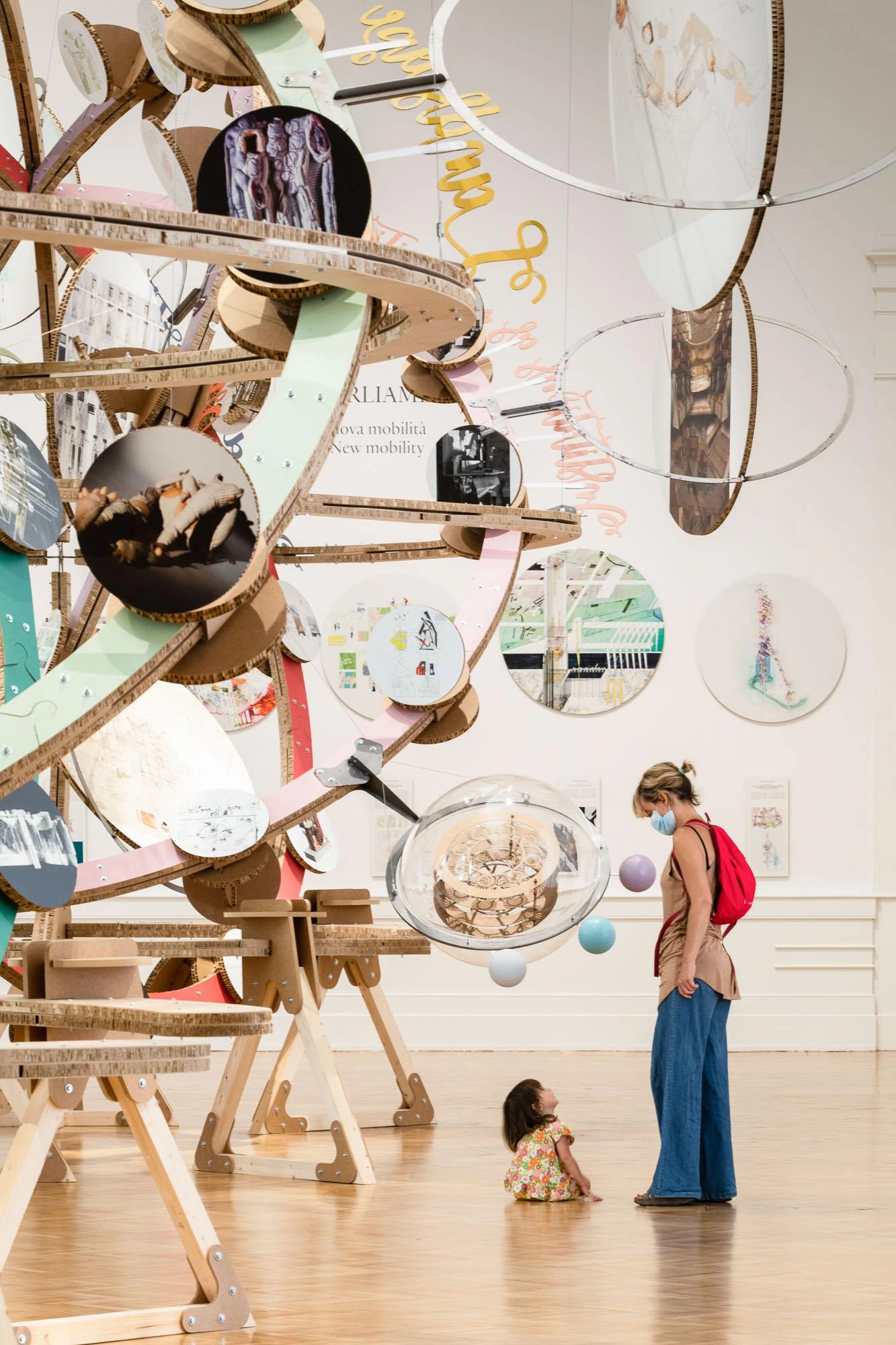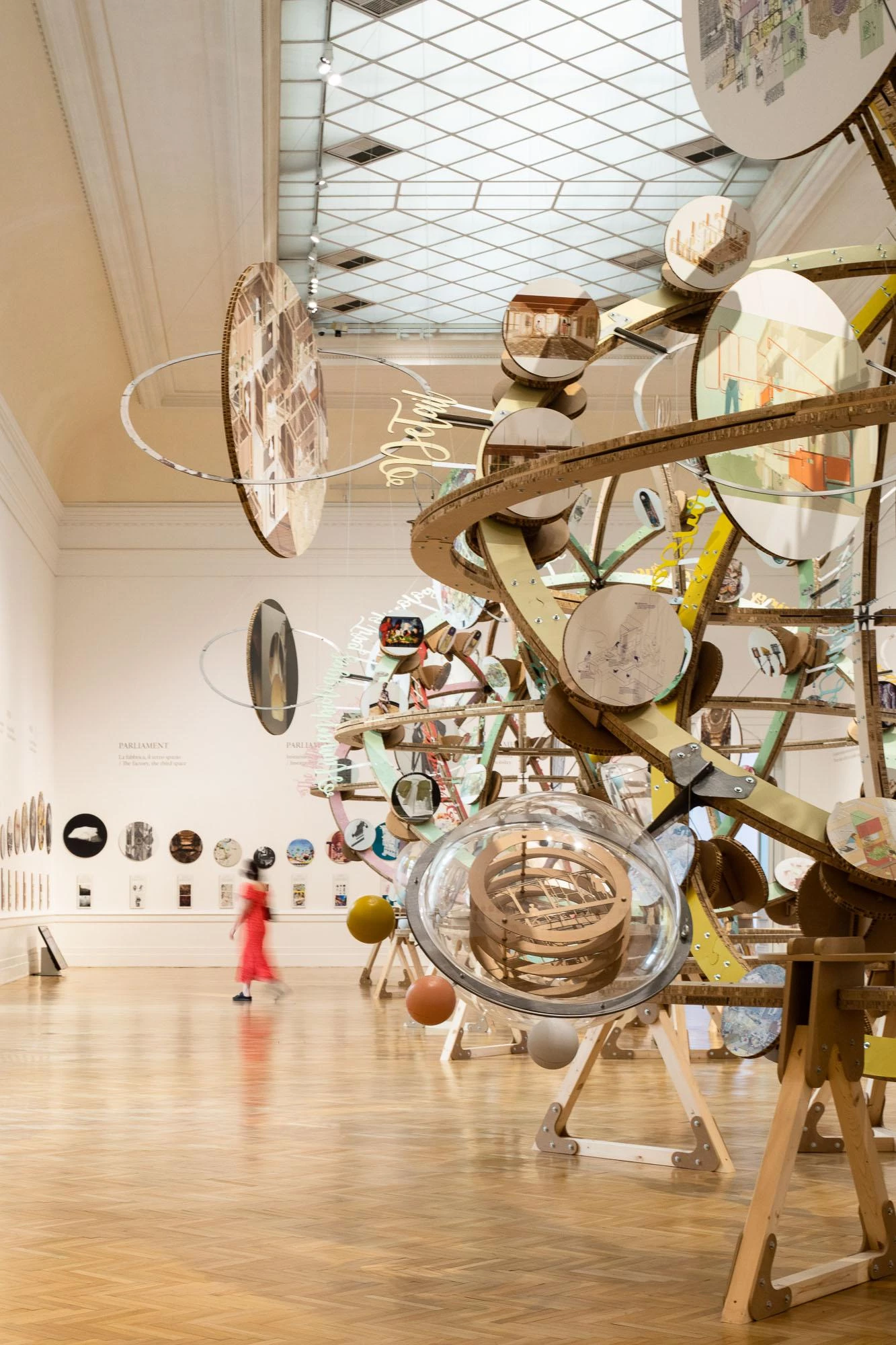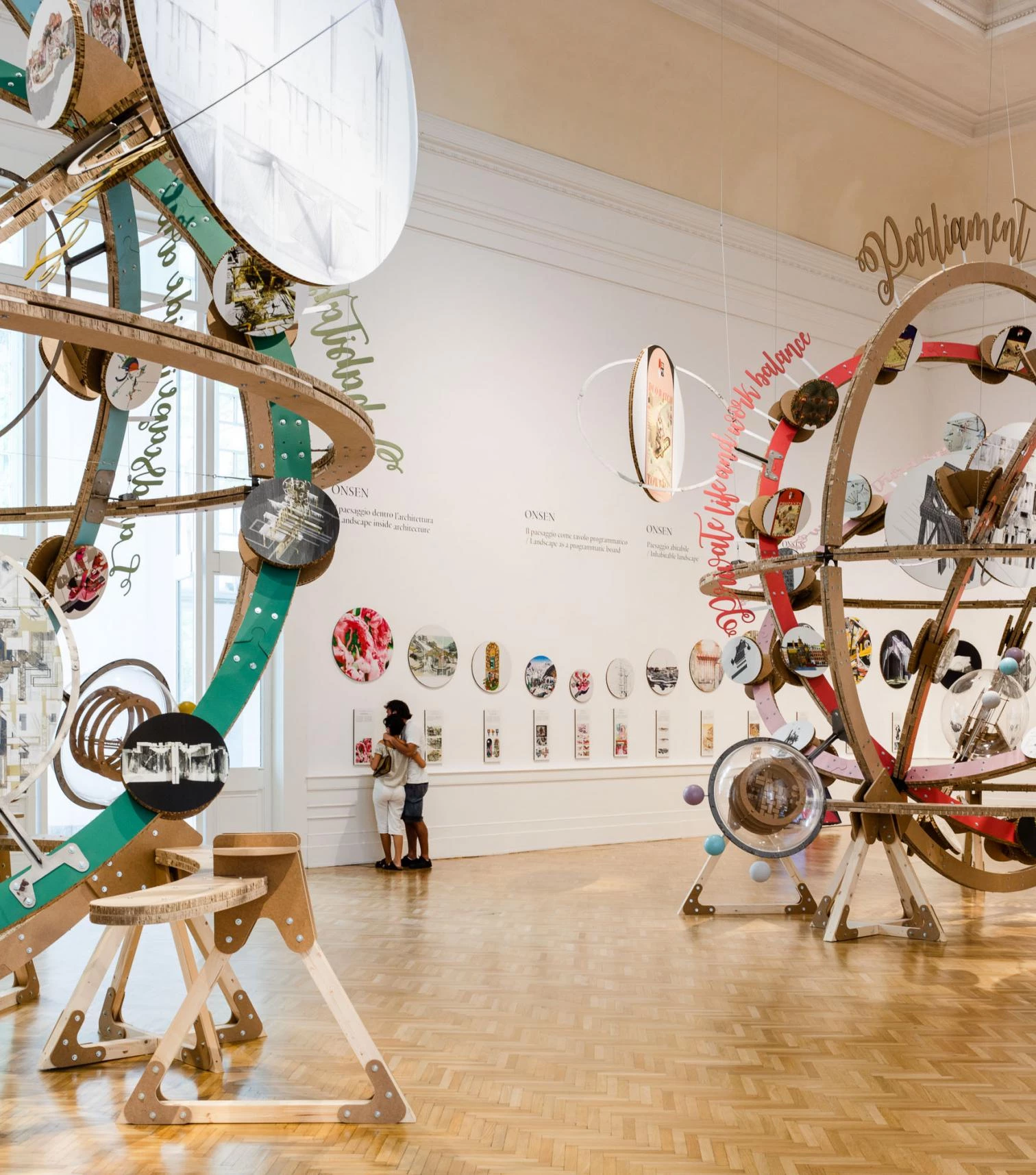‘Cosmowomen. Places as constellations’, by Izaskun Chinchilla, at Galleria Nazionale d'Arte in Roma

Text description provided by Izaskun Chinchilla Architects
Cosmowomen show the design works of 65 women architects (over 20 different nationalities) who have taken the master’s degree programme at the Bartlett School of Architecture in the past ten years. They have been tutored by 22 tutors, 50% of them women, who also come from a wide variety of backgrounds in cultural and professional terms.
The full incorporation of women into the architectural sector can be seen as a strategic opportunity. If we give women the right not just to work, with equivalent salaries and decision-making authority, but to use their distinctive social, cultural and biological experience and their distinctive historical heritage, is this not more likely to change the terms in which the crises of architecture are occurring? This exhibition seeks to provide an affirmative answer to that question. The basic hypothesis is that fully incorporating women into the professional and academic field of architecture would generate new places for thought and attention on the part of professionals or consolidate and expand those that exist, and that it would also intensify the relationships between those ‘places of thought’, producing a kind of constellation.

The exhibition presents a physical installation that reflects on the construction of those places and the relationships they create with each other, using two fundamental points of reference. On the one hand, it introduces the figure of spheres, taken from Peter Sloterdijk, to emphasise that those places of thought are also — crucially — spheres of coexistence: they are not spaces for individual habitation, but places intended for meeting, debate and collective production. The object of thought in that place is also the formula for coexistence itself, something that male culture has not thought about so much.
When visitors enter the room they will find three large spheres, 5.5 m in diameter. Each of them devoted to a place of coexistence that has been important in constructing the common culture of women, because they have also been the origin of various forms of segregation: Gynaeceum, Onsen and Parliament. The spheres are arranged, also through Sloterdijk’s influence, in decreasing order of intimacy.
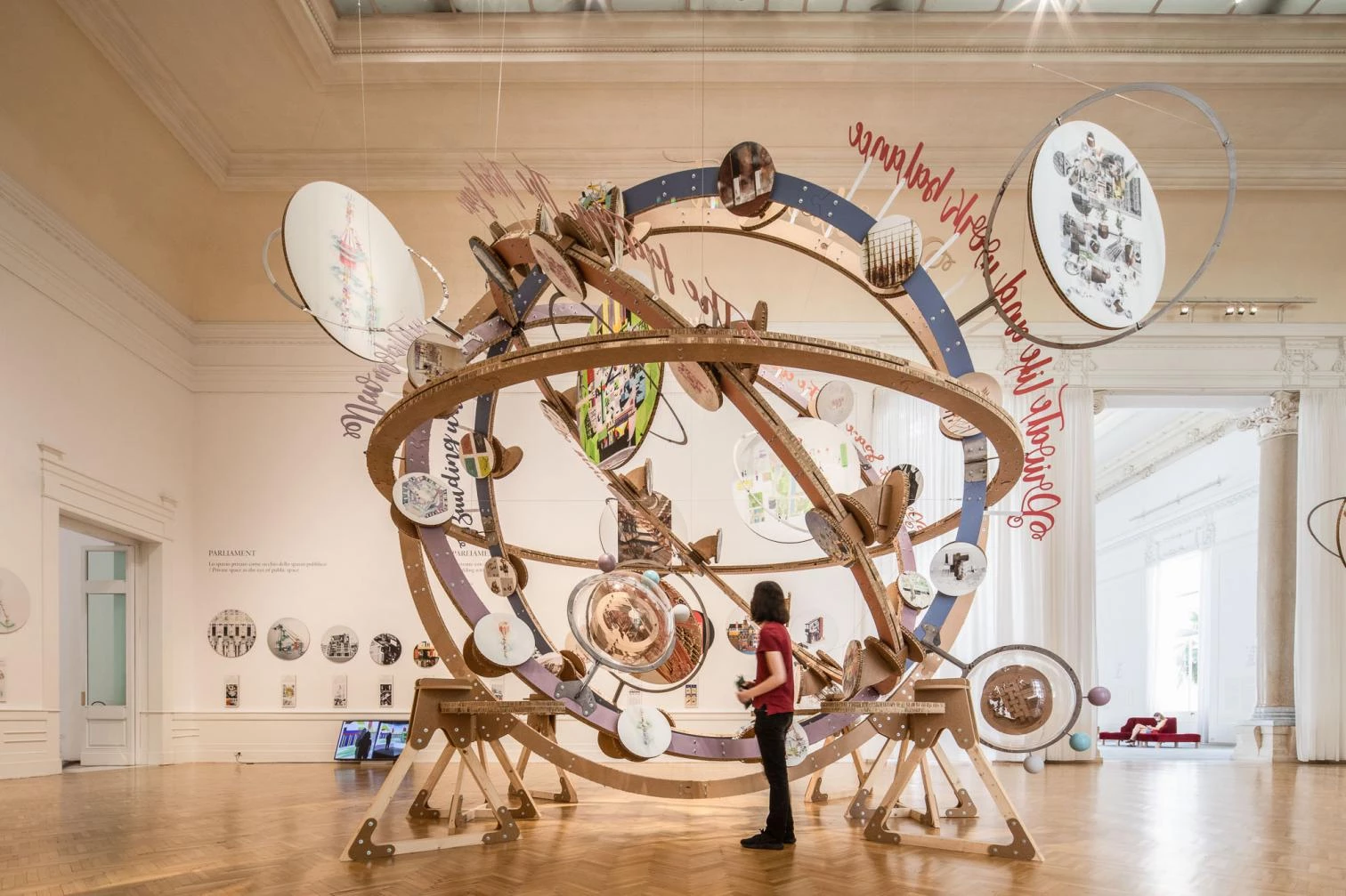
The first is Gynaeceum, a reflection on places for a new kind of domesticity. The term comes from classical Greece, where women lived together, developing plentiful relationships of solidarity and mutual understanding, if we are to judge by descriptions such as those of the female poet Sappho, but deprived of the right to own or inherit property or participate in public, economic and political life. The home was an essential instrument for maintaining social order by segregating women and subjecting them to surveillance.
Onsen, the second sphere, reflects on the private and public relationship of human beings with nature and landscape. The term is taken from the hot springs of Japan, usually located in a beautiful natural setting. Onsen thus combined knowledge of one’s own body and of the landscape. In traditional Japan both genders bathed together, it was when Japan was opened to the outside world that men and women were separated in an act of imposition of colonialist prejudice.
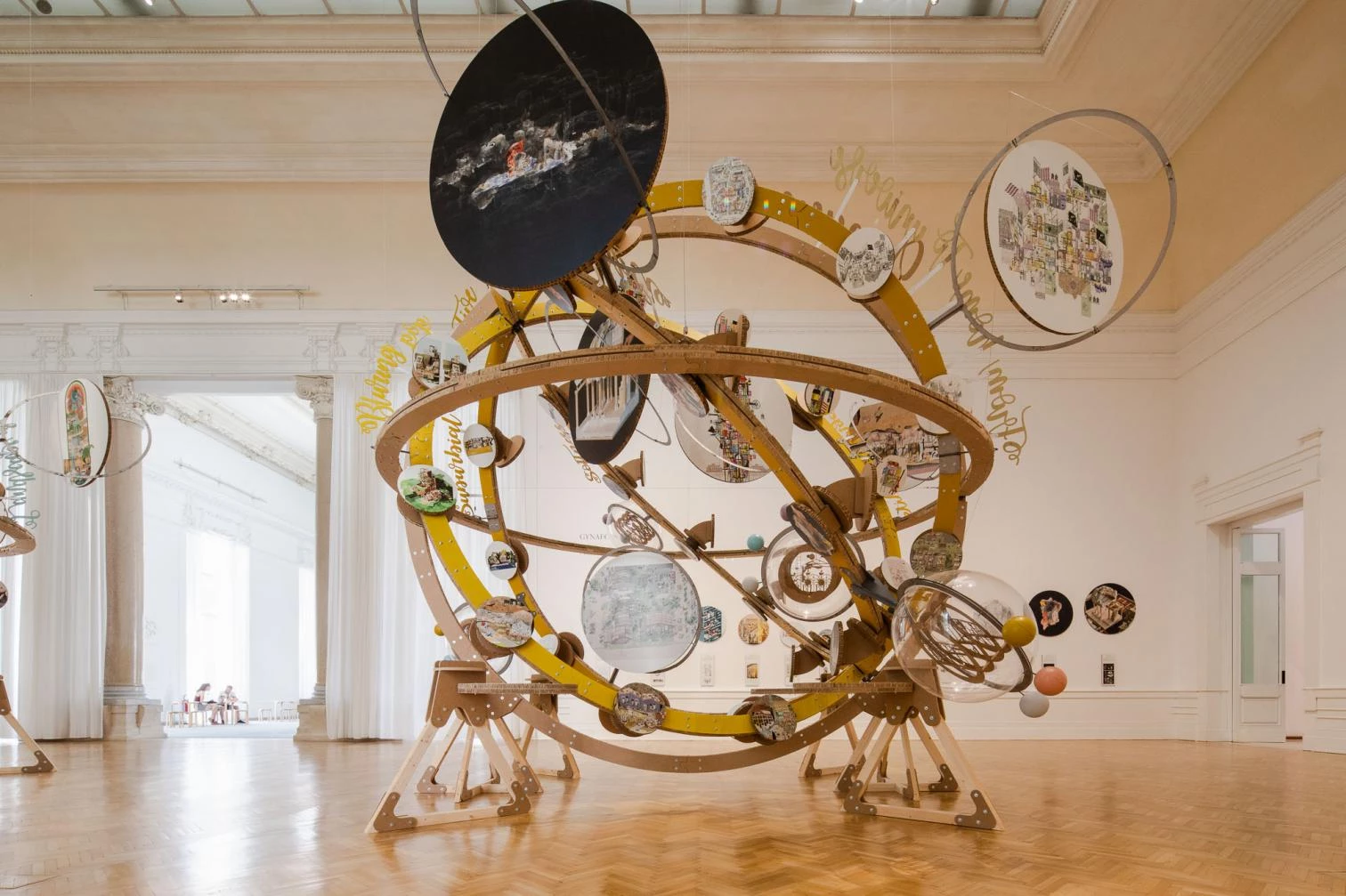
Parliament is the last of the spheres. It reflects on the new opportunities for the public space, institutions and the city. National parliaments have been the setting for a dual segregation. From the second half of the nineteenth century and during the twentieth they were the theatre in which universal suffrage was debated. The second source of segregation witnessed by national parliaments has been that of women’s representation in government. There are currently only 16 out of 194 countries in whose parliaments the proportion of women exceeds 40%.
When visitors enter each of these spheres they will immediately recognise the exhibition’s other point of reference: armillary spheres. These reduced models of the cosmos from the earthly perspective were astronomical instruments used in Antiquity and the Middle Ages to determine the positions of heavenly bodies. Like armillary spheres, ours are composed of a series of rings, three for each sphere. Each face of each ring introduces a place of reflection and coexistence.
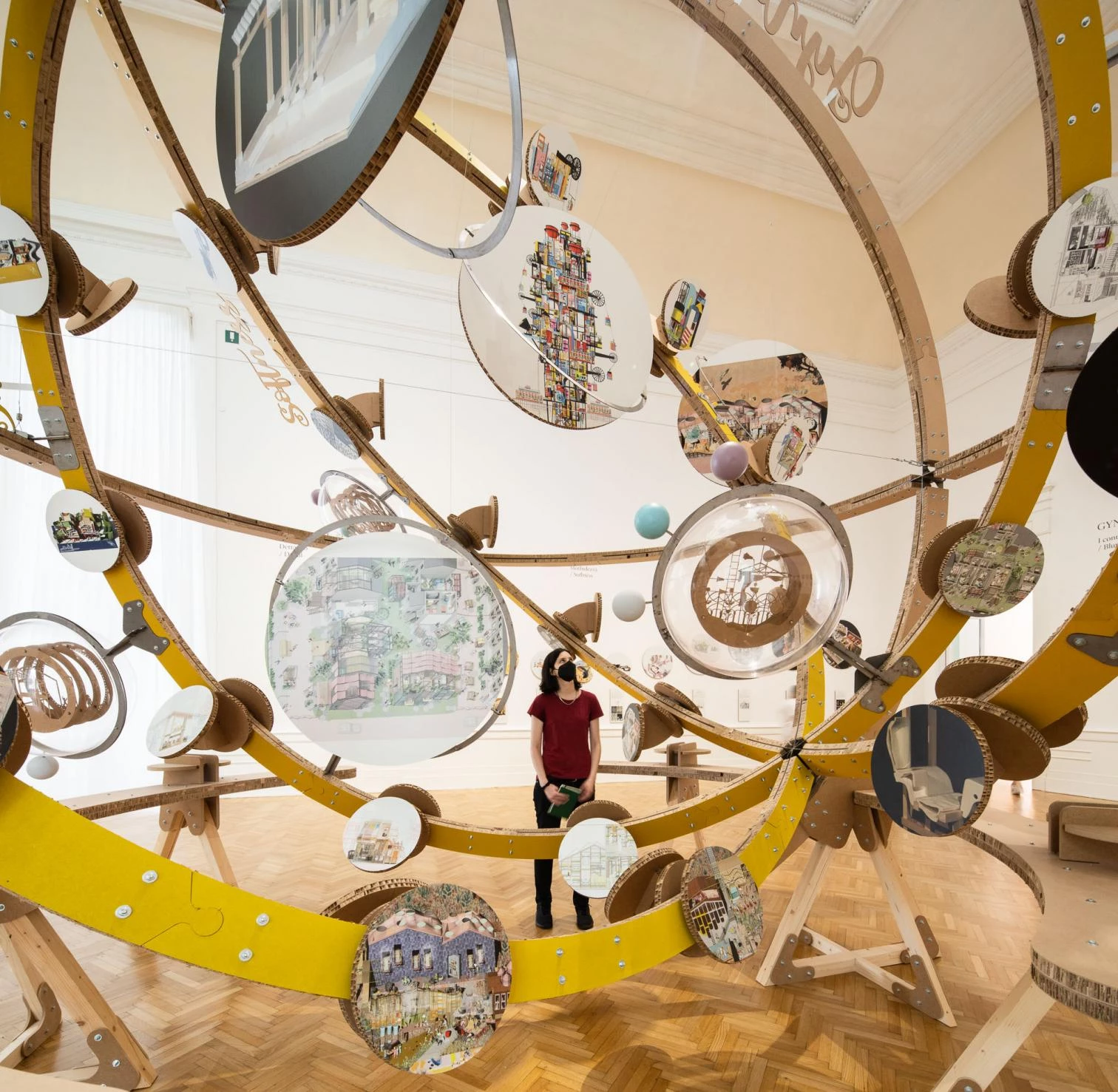
The Gynaeceum sphere reflects on material aspects of habitation and their anthropological dimension: the importance of detail (sometimes called the decorative element), soft, comfortable materials, and the concept of delicate, light, gentle protection implicit in baby clothes and accessories and women’s lingerie. It is made up of six rings: Detail / Softness / Blurring pop / Material lingerie / Suburban alternative / From home to universe
The Onsen sphere includes six places of reflection and coexistence in six rings. All of them offer a reconstruction of the concept of landscape as nature perceived, observed and valued by human beings: Human biology as part of ecology or landscape / Landscape configuring architecture / Landscape inside architecture / Landscape as a programmatic board / Inhabitable landscape / Rebuilding landscape

The Parliament sphere presents a reconstruction of the public space. For this purpose it explores the possible role of three basic constituent and structural elements: institutions, mobility and so-called third spaces or places. It is composed of the following six rings: The factory, the third space / Institutions as minicities / New mobility / Private space as the eyes of public space / Building with time / Private life and work balance
This new ‘places of thought’ that we are expecting will bloom in the next decades will inspire and interrogate both women and men and also those that are not coming from a binarian self-understanding. All women in this exhibition has learnt and feel inspired by male tutors and professors. Following their experience, we are not promoting an architecture for men and architecture for women but a form of practice and thinking in which women, with their differential culture, legacy, sensibility, background and social role are able to actively shape the way we define architecture, bringing heterogeneity to a field that has been largely domain by a very homogenous racial, political and cultural background.
Exhibition ‘Cosmowomen. Places as constellations’ by Izaskun Chinchilla at Galleria Nazionale d'Arte Moderna e Contemporanea, Roma. Until 10/10/2021.
